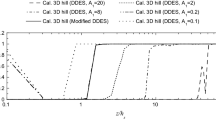Summary
A variety of programmes and field experiments were carried out in order to develop and evaluate models of transport and diffusion of pollutants in complex terrain areas. As part of this programme, in this study, we have focused our interest on analyzing the basic features of different flow fields and thermal structures developed in a complex area and their relation to air pollution problems. The area is located in the province of Barcelona (in the northeast of Spain) close to a wide industrial zone, thus a pollutant flux could affect this region. In order to carry out the main purpose of this study we have analysed data from a Doppler Sodar (FAS 64) and a network of near surface meteorological and air quality stations. In addition, different dynamical simulations given by a numerical mesoscale model (MM5) are also analyzed. The results show that the main flow fields and thermal structures generated in this area are: sea breeze, slope drainage winds, channelling winds created by terrain constrictions and cool-air accumulation in low-lying regions. This last structure, developed specially in winter time, gives rise to stagnant cold air masses and strong thermic inversions, with average lapse rate of −4 degrees on 100 m, which contribute to increase air pollution concentration, especially SO2. Hourly and daily averaged SO2 concentration can be higher than 350 and 138 µg m−3 respectively. In addition, as “La Plana” is located not far from the Mediterranean Sea, during summertime the sea breeze arrives into this zone via its southern entrance, thereby reaching the whole area. The arrival of the sea breeze in to “La Plana”, which advects pollutants from the nearby industrial area, is the main cause of some of these pollutants, especially ozone and its precursors, attaining high concentrations during afternoon hours. The contribution of the sea breeze is variable, but could represent between a 25% to a 30% of its total value.
Similar content being viewed by others
Author information
Authors and Affiliations
Rights and permissions
About this article
Cite this article
Soler, M., Hinojosa, J., Bravo, M. et al. Analyzing the basic features of different complex terrain flows by means of a Doppler Sodar and a numerical model: Some implications for air pollution problems. Meteorol Atmos Phys 85, 141–154 (2004). https://doi.org/10.1007/s00703-003-0041-z
Received:
Revised:
Accepted:
Published:
Issue Date:
DOI: https://doi.org/10.1007/s00703-003-0041-z




